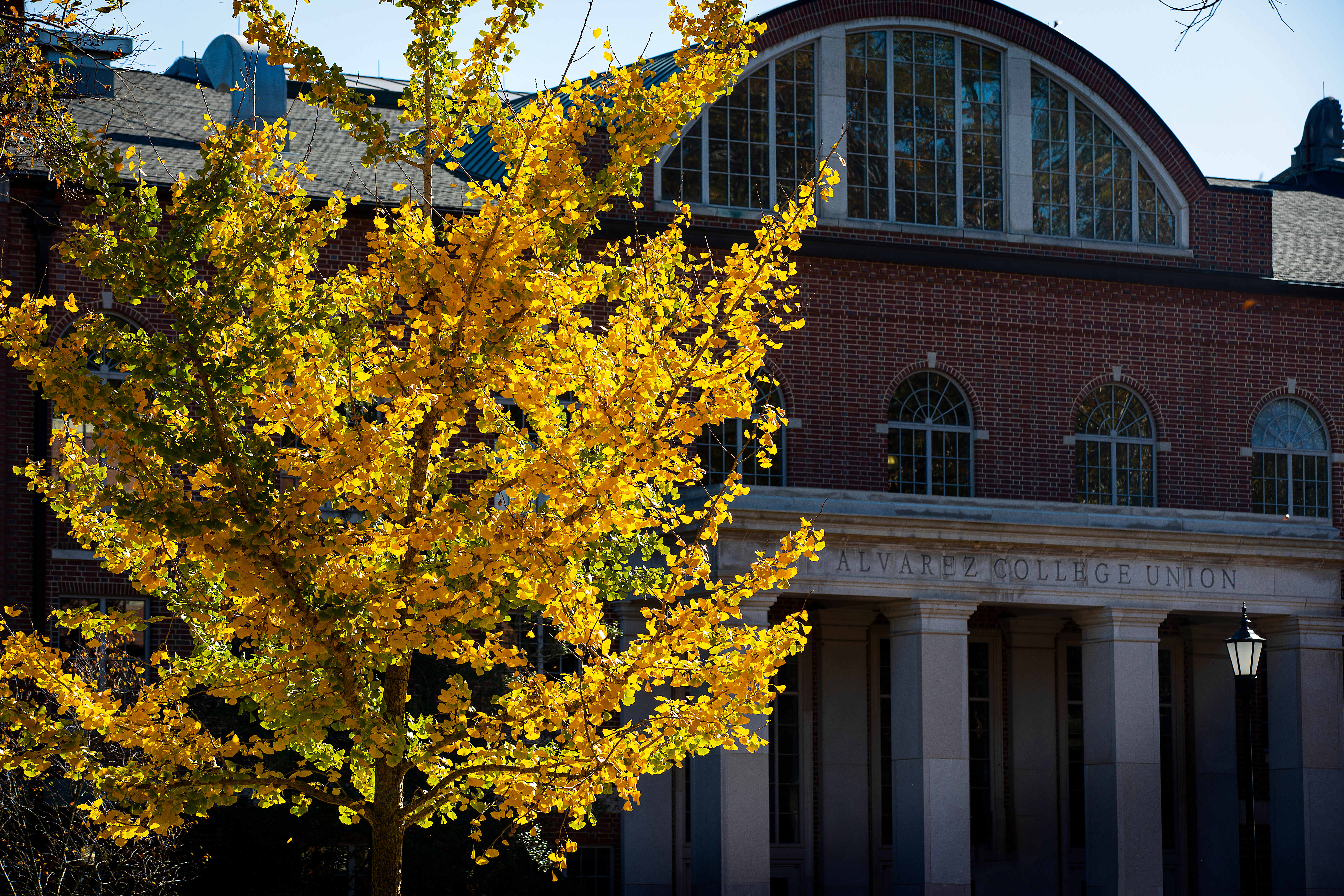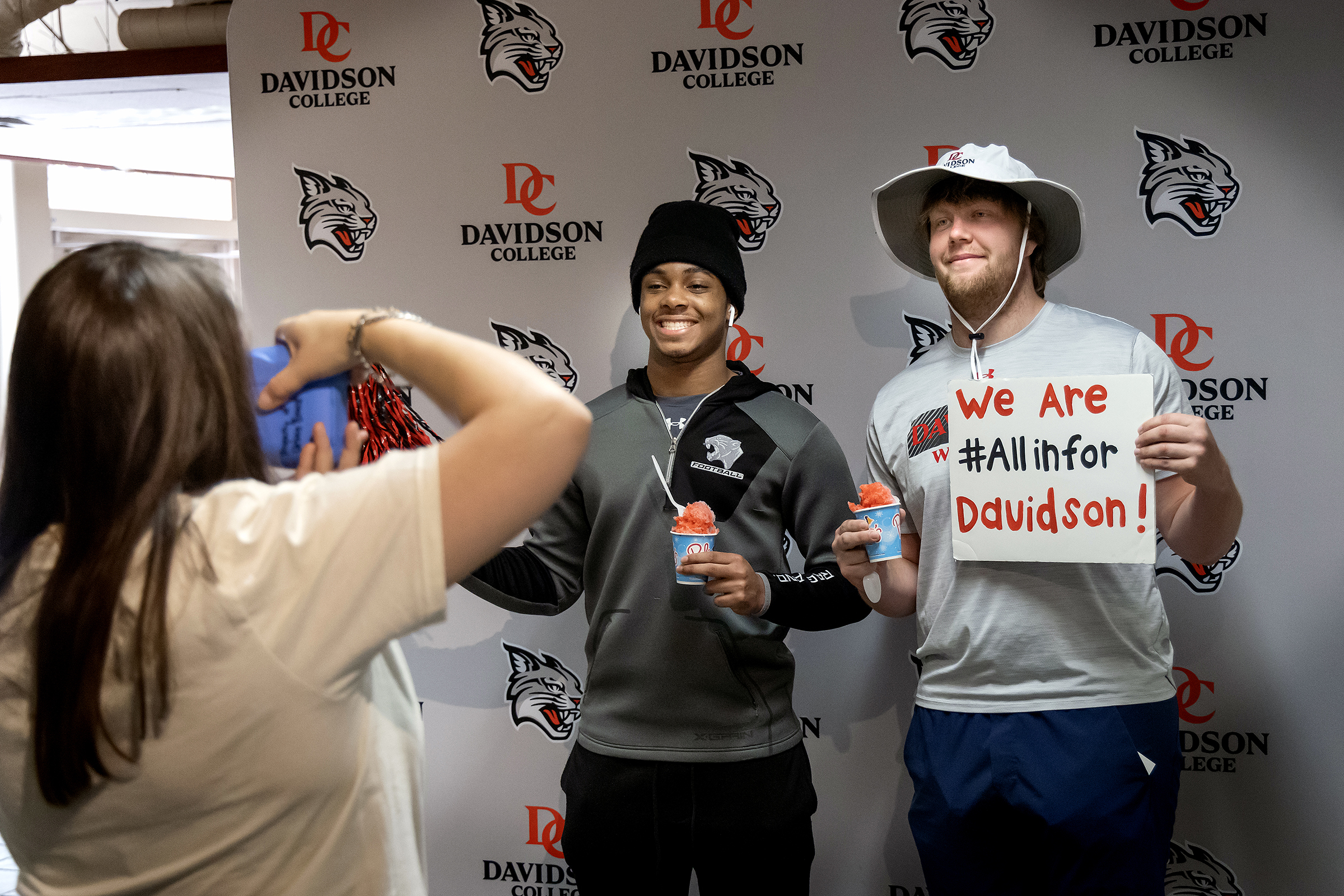Beneath the Veneer: Documentary Film Probes a Heinous Crime, Justice Left Undone
January 11, 2021
- Author
- Mary Elizabeth DeAngelis

Thomas Espenschied, Digital Media Specialist (left) and John Wertheimer, William R. Kenan, Jr. Professor of History
John Wertheimer, William R. Kenan, Jr. Professor of History, has spent more than two decades teaching, researching, and writing about the legal history of the U.S. South, including the histories of race and slavery.
In spring 2018, he teamed up with local filmmakers Thomas Espenschied and Colin Sylvester to teach a course on how to make a historical documentary. The film’s topic would be the 1947 lynching of a Black man in Greenville, South Carolina, which Wertheimer previously had explored in a legal history seminar.
Students sifted through old newspaper accounts, legal documents, and NAACP files. They visited courthouses and archives in South Carolina. And they learned how to shoot and edit video.
Their project became their vocation.
Frank Carroll, ’19, Cassie Harding ’20 and Stevie Jefferis ’19 continued the research that summer. They visited the National Memorial for Peace and Justice in Montgomery, Alabama, to learn more about the south’s lynching history. They travelled from downtown Greenville through rural South Carolina, visited Clemson University and the University of South Carolina archives, and studied state Supreme Court records.
A tip from another historian led them to Aquillious Jackson, who indeed remembered the lynching, because the victim, Willie Earle, was his close childhood friend.
History became very present, and very human.
“Meeting Mr. Jackson was such a moving experience,” Harding says. “As he answered our questions, it seemed to be cathartic for him. He had never really shared the information about what had happened and how it affected him.”
Their research and interviews with Jackson and others in the community turned into the documentary film, Remembering Willie Earle. It played to full audiences on campus and in town in 2019. Jackson attended the campus showing and shared his thoughts with the audience.
The film is currently being edited to present at a future film festival.
No Justice
In 1947 Earle was arrested and jailed as a suspect in the stabbing death of a white cab driver.
His case never got to trial. A group of white cab drivers stole Earle out of jail, drove him to the countryside, tortured him and killed him. Twenty-six of the 31 members of the lynch mob signed confessions, but an all-white jury acquitted them all. Cheers, hugs and celebration from white supporters followed the verdict. Earle’s family and friends were left angry, afraid and grieving.
Jackson, Earle’s childhood friend, remembers driving to the woods where the lynching occurred.
“I sat in my car, and looked, and cried to myself,” he says in the film.
Earle was the last known person to be lynched in South Carolina. The Davidson researchers concentrated on a state law that enabled surviving family members of lynching victims to sue the counties in which the lynchings occurred for a minimum of $2,000. It took Earle’s mother years to secure a $3,000 payment from Greenville County.
“Our focus was, what actually entails real justice in this case?” Jefferis says. “The money didn’t compensate for his death. The justice she was seeking was for the county to acknowledge that they were complicit.”
During their research, the Davidson students went to downtown Greenville to ask people on the street if they’d ever heard about Willie Earle. Very few had.
“It really changes the way you see things,” Harding says. “Greenville is this lovely, cosmopolitan city, but if you know about its past, it puts a new perspective on things. Every place, including Davidson, comes with a historical memory. People have to reckon with that. You have to take off the covers and see what’s under there.”
Lasting Impact
Like several other classes that Wertheimer has taught over the years, the students’ work will end up in a history book that he and they co-author. Earlier students, beginning with the class of 1997, contributed to a book about North Carolina legal history, from slavery into the 20th century. This new book, about race and the law in South Carolina, from the 1840s through the 1940s, is in the process of being published. The case of Willie Earle will figure prominently.
Wertheimer says he always asks students in his collaborative research seminars to propose and select the topics they will study as a group.
“For the past couple of decades, topics involving race and slavery have dominated their selections,” he says. “Present-day concerns influence how we answer historical questions. They also influence which questions we ask.”
His former students say their research, writing and filmmaking made a lasting impact.
“This was hands down the most gratifying, thought-provoking project I’ve ever done,” Jefferis said. “It revolutionized my way of learning, and it made me see that my time at Davidson was contributing to something much bigger.
“As a white woman, I will never know what it’s like to be a person of color. Davidson helped direct a lot of resources into our project. It showed me that they valued the humanity of the research. By bringing the film to campus, it helped other students understand.”
Harding says the class and project steered her in the direction of the Federal Defender’s Office in Atlanta, where she’s an assistant paralegal. She plans to go to graduate school and eventually become a public historian.
“I’m a storyteller at heart,” Harding says. “History is a living force, it’s about how we engage with the past, think about our present role in change, and envision a better future reality.”
Carroll says the project helped prepare him for his current job as an associate producer at public television station WETA in Washington, D.C. He learned research and interviewing skills that help him tell people’s stories about their lives during the COVID-19 pandemic and the ongoing social justice movement.
“Saying this was life-changing is an understatement. It really reframed a lot of issues about race and the persistence of inequality in this country,” Carroll says. “It impressed upon me the undeniable presence of racism throughout American history, and how it still plays out today, in everything from policing to voter suppression and the rise of white supremacist fringe groups.
“I feel like so much of what’s happening today could have jumped out of newspapers from the 1890s.”
This article was originally published in the Fall/Winter 2020 print issue of the Davidson Journal Magazine; for more, please see the Davidson Journal section of our website.



